Western Masuria
GRUNWALD.
The Battle of Grunwald
The field of the Battle of Grunwald (called the First Battle of Tannenberg (“Schlacht bei Tannenberg”) in German, and the Battle of Žalgiris (“Žalgirio mūšis”) in Lithuanian) isn’t located next to the village of Grunwald at all, but actually at the nearby Stębark.
This is the place where the largest battle in the history of medieval Europe took place on July 15, 1410. The Polish-Lithuanian army under the command of King Władysław Jagiełło and Grand Duke Vytautas of Lithuania defeated the army of the Teutonic Order led by the Grand Master Ulrich von Jungingen.
The battle had a crucial impact on the fate of Poland, Lithuania and the Order itself, as well as on the balance of power in contemporary Europe.
Bare swords
Number of troops
Date of the battle
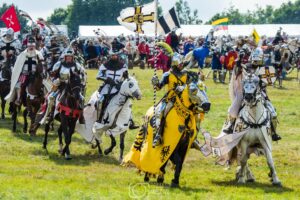
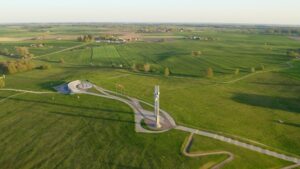
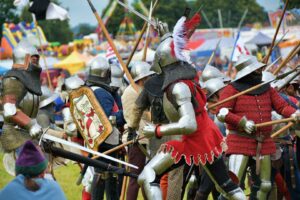
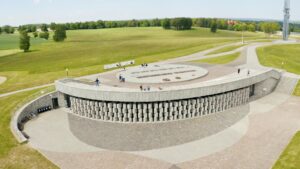
Attractions
OF GRUNWALD.
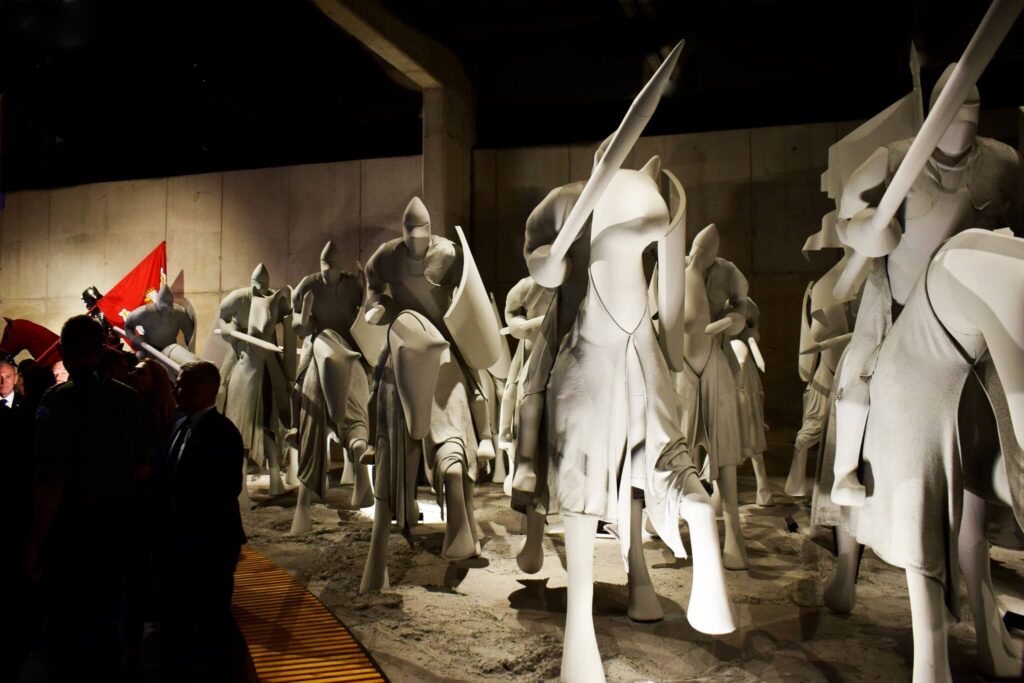
The Battle of Grunwald Museum
The Battle of Grunwald Museum in Stębark is a modern facility that showcases the broad historical context and significance of the battle. The museum has about 1,3000 square meters of exhibition space. Visitors can explore the permanent exhibition called “The Great War with the Teutonic Order from 1409 to 1411”.
This exhibition is a combination of state-of-the-art multimedia technology and traditionally displayed artifacts. It’s divided into several thematic sections, the chronology of which spans from the time of internal fragmentation (12th to 14th century) to the present day. The visitor is introduced to the issues of international relations that led to the outbreak of war, information about the course of the conflict and the battle, as well as the history of archaeological research of the battlefield.
The tour ends in the exhibition hall, which is dedicated to the traditions of Grunwald throughout history. In the exhibition hall, there are videos, apps and interactive maps, as well as medieval artifacts obtained during excavations and reproductions of costumes, weaponry and equipment of medieval knights.
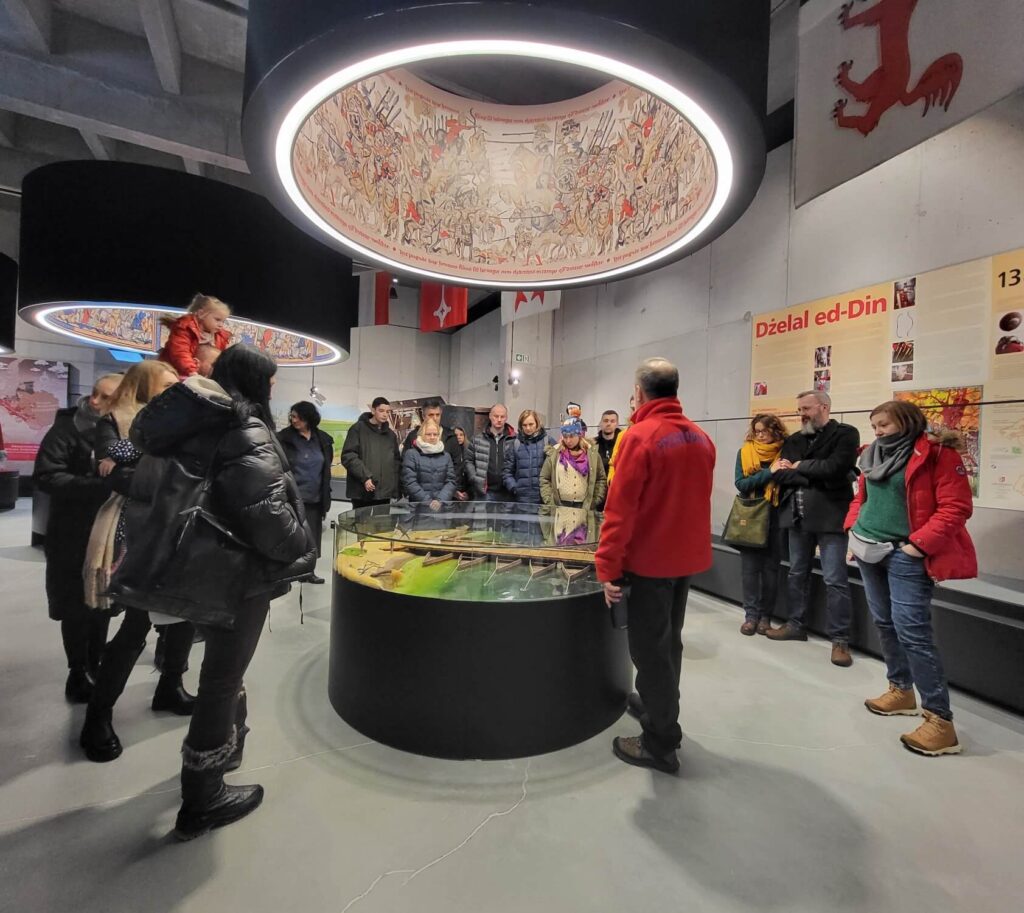
Take a guided tour
For tourists, especially those visiting the Battle of Grunwald Museum with children, we recommend visiting it with a tour guide. The ticket doesn’t cost much more than a standard one, but you will learn much more about the course and consequences of the battle, and also about the daily lives of knights and civilians. Also, if you have any questions, the tour guide will answer them all.
The museum doesn’t have only exhibitions, it also houses numerous educational workshops, tournaments and conferences. The Field of the Battle of Grunwald and the Battle of Grunwald Museum in Stębark are one of the flagship tourist attractions of Western Masuria, which you absolutely must visit. This is a unique opportunity to learn about the history and culture of the region.
The museum in Stębark is open all year round.
From April 10 to September 30
9:30 am - 6:30 pm.
From October 1 to April 9
9:30 am - 5:30 pm.
Standard ticket: 25 PLN
Children and teenagers: 23 PLN
On Mondays, entry is free of charge (tour guide or audio guide costs 28 PLN). Visit the battlefield and the museum in Stębark now! You won’t regret it!
/ prices as of June 2023
Fun facts
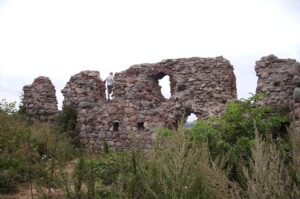
Kurzętnik
The Polish-Lithuanian army approached Kurzętnik on July 10. A convenient crossing across the Drwęca River was located there. They approached from the east. On the same side of the river stood a Teutonic castle. On the other bank were the main forces of the Order who had already been gathering there since the day before, led by the Grand Master. However, crossing the river was too risky, and the signal was given to retreat. In one hot day, the Polish-Lithuanian army, covering more than 42 km on foot, broke away from the enemy.
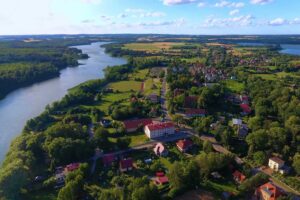
Dąbrówno
A small, but heavily fortified town covered a narrow isthmus between the lakes of Dąbrowa Mała and Dąbrowa Wielka. Polish-Lithuanian forces arrived near it on July 13 before evening. After a three-hour battle, all the defenders were cut down, as well as many civilians. The intention was to provoke the Teutonic Knights into a battle before the troops even stood at Malbork. And the goal was achieved: July 14 was spent near the scorched ruins of Dąbrówno.
Learn more
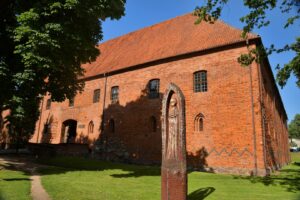
Teutonic castle in Ostróda
After the battle, the Grand Master’s body, on Jagiełło’s orders, was transported to the Malbork Castle. Along the way, the funeral procession stopped for the night at the castle in Ostróda.
Learn more
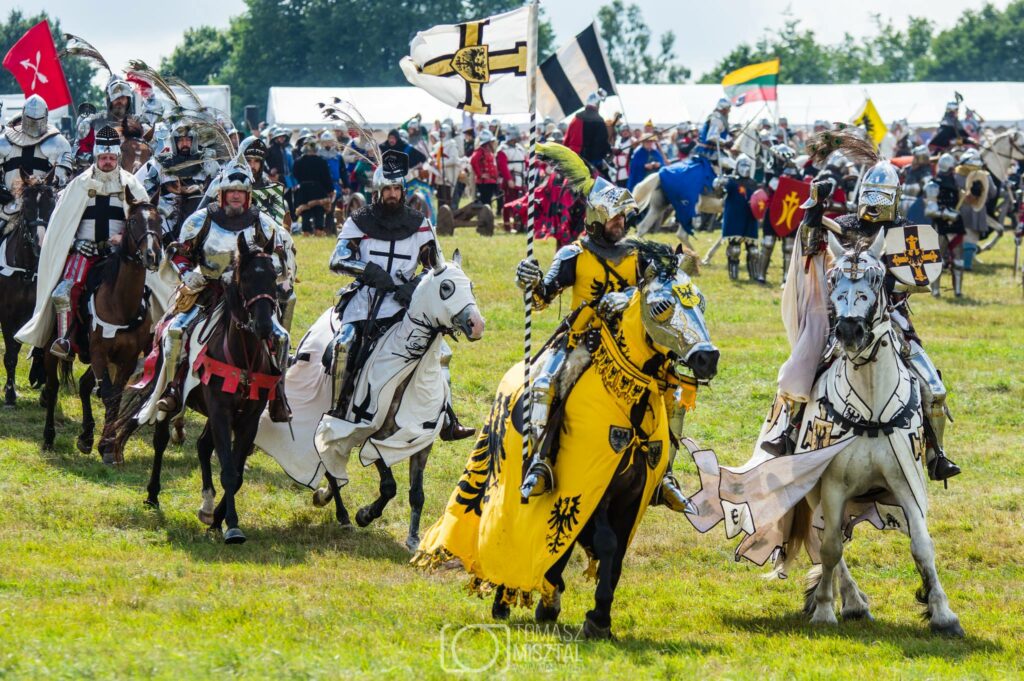
The Battle of Grunwald Staging
For more than a quarter of the century, in mid-July, during the days of Grunwald (which last for several days), a re-enactment of the Battle of Grunwald is held, to which re-enactors from all over the world come. Over 2,000 knights from Poland, Europe and even the United States participate in the event.
Even before the staging itself, many different tournaments are held during the Grunwald Days, including archery, knightly battles, tournaments, etc.
The staging day always begins with a mass, followed by the Grunwald Speech, during which the deputies present swords to Ladislaus Jagiello and Vytautas. It’s then followed by the re-enactment of the Battle of Grunwald, which is watched by tens of thousands of spectators from all over the world.
